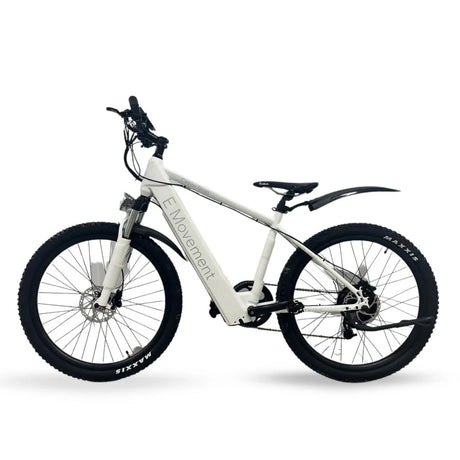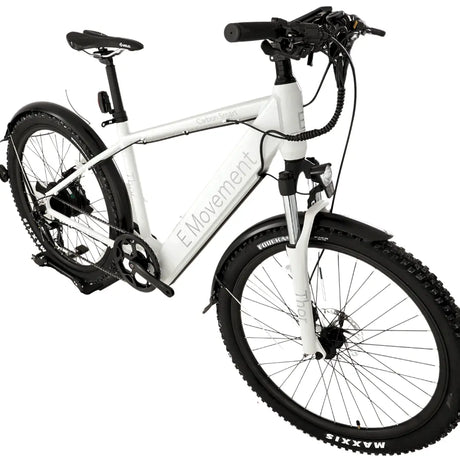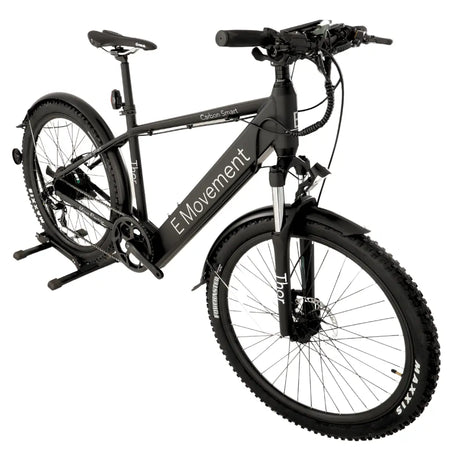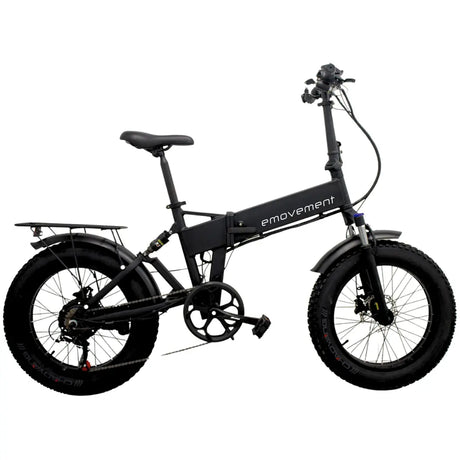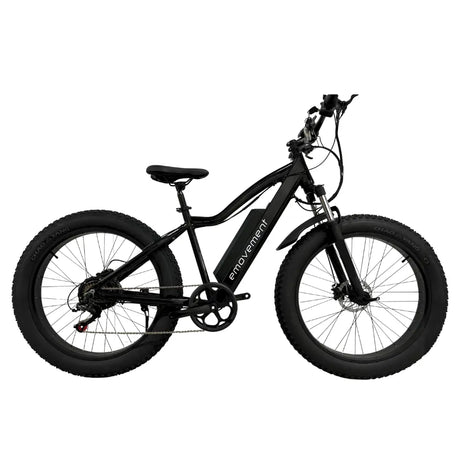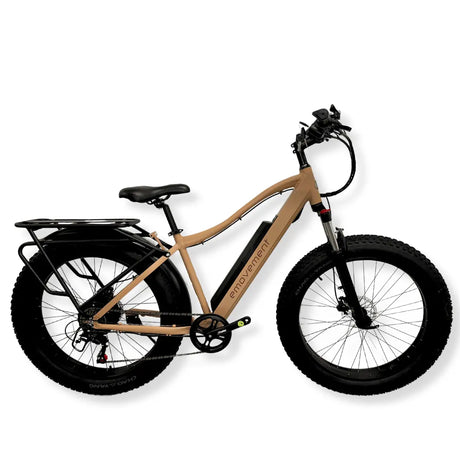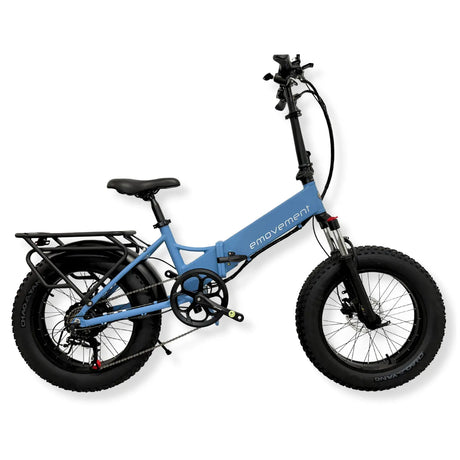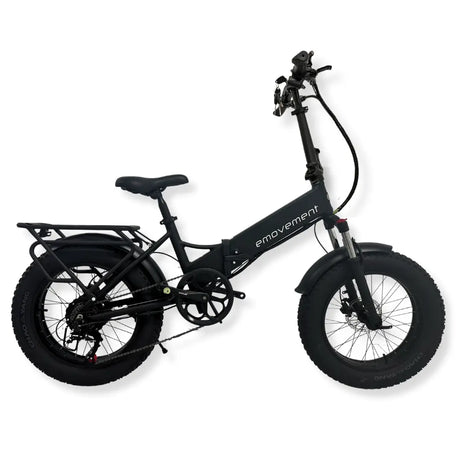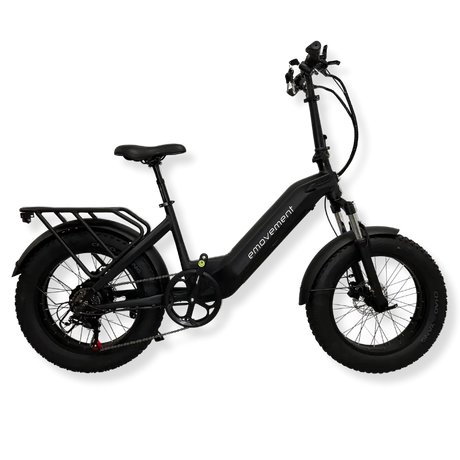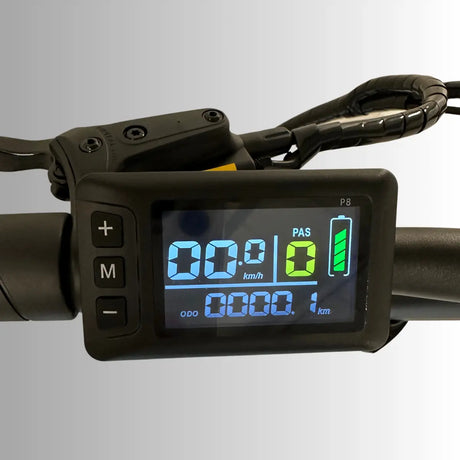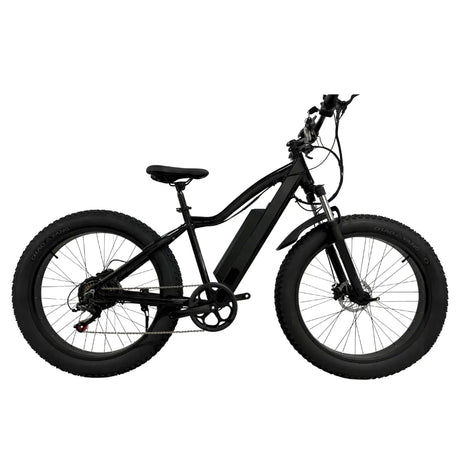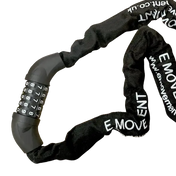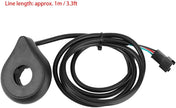Inside this Article:
- Why Electric Bike Servicing is Important
- When to Get Your Electric Bike Professionally Serviced?
- What is Included in Professional E-Bike Servicing?
- 1. Overall Inspection and Safety Check
- 2. Electrical System Assessment
- 3. Brake System Check
- 4. Drivetrain Service
- 5. Wheel and Tyre Evaluation and Adjustment
- 6. Handlebar and Saddle Adjustments
- 7. Test Ride
- 8. Consultation and Recommendations
- How to Choose a Reliable Service Provider
- Conclusion
- FAQs
Those zooming through city streets or cruising on country roads with their e-bikes might wonder occasionally: do electric bikes need servicing? The answer is a resounding yes! Like any high-tech travel companion , your pedelec requires regular check-ups to keep it running smoothly and efficiently. Understanding when and how to service your vehicle is ultimately about enhancing your riding experience and cycling with confidence wherever you go.
Whether you're a daily commuter or a weekend adventurer, keeping your bike in top condition is essential. Keep reading as we answer questions from how often to service your bike to can any bike shop service an electric bike.
Why Electric Bike Servicing is Important
Regular servicing of your e-bike is vital for your safety on the road. These bicycles come equipped with complex electronic systems and mechanical components that may malfunction when not maintained properly. This could mean brakes that don’t respond swiftly or a motor that cuts out unexpectedly. By adhering to a routine service schedule, you can catch potential issues before they pose a risk to your safety and ensure every bike part functions as it should.
Besides safety, the performance of your electric bike heavily depends on regular servicing. A well-maintained bike is more efficient, rides smoother, and provides a more enjoyable experience. Servicing your e-bicycle helps optimise the battery life and motor efficiency, which are pivotal for those longer rides or steep climbs. It also guarantees that parts like chains and gears are in good condition, reducing wear and tear from regular use and extending the pedelec’s lifespan.
When to Get Your Electric Bike Professionally Serviced?
Maintenance is not a substitute for servicing. The frequency of professionally servicing an electric bike is at least after 30 hours of ride or after riding 500 miles, whichever comes first. If your e-bike has been stored away for an extended period, it's advisable to have it serviced before you start cycling again. A thorough service inspection will assess your vehicle for any signs of wear and replace components to identify potential issues early on and reduce the risk of breakdowns.
Other situations that warrant the expertise of a professional include complex electrical issues and post-accident. If you encounter persistent electrical problems such as failing to charge, intermittent power cuts, or error messages that you can't resolve, it's time to consult a professional. Additionally, in the case your e-bike has been involved in a crash , have it inspected by a professional to ensure all components are functioning how they should.
While regular home maintenance helps keep your pedelec in good shape, there are times when professional servicing is necessary to address more complex issues or perform detailed check-ups.

What is Included in Professional E-Bike Servicing?
Professional e-bike servicing encompasses a comprehensive check of all the critical components that make your vehicle’s operation smooth, safe, and efficient. Here’s a detailed look at what it entails to have your electric bicycle professionally serviced:
1. Overall Inspection and Safety Check
The service kicks off with a meticulous inspection of the bike's frame, fork, and other structural components for spotting any potential issues. This stage is crucial to determine whether all parts of the bike are functional and ready to withstand the rigours of regular use without compromising rider safety. A detailed inspection can identify subtle signs of stress or damage that might otherwise go unnoticed.
The drive belt, gears, spoke tension, brakes and brake pads, bottom bracket, display, battery, charger, motor, and screws all go through a detailed assessment and adjustment.
2. Electrical System Assessment
Technicians give the electrical system a close examination to test the battery’s life, inspect the wiring for any signs of wear, and ensure the motor delivers consistent power. Updates to the bike’s firmware are also performed if available, optimising your bike’s performance with the latest software enhancements directly from the manufacturer. They also guarantee that all firmware updates are compatible with existing hardware to avoid any conflicts or issues.
3. Brake System Check
A brake system check helps maintain your stopping power for an extended period. The inspection includes cleaning, adjusting, and when necessary, replacing brake components to maintain top-notch responsiveness. Well-maintained brake systems are essential for safe and reliable stopping under all riding conditions. Additionally, experts might also advise on the best type of brake pads based on your typical cycling terrain.
4. Drivetrain Service
During electric bike servicing, the drivetrain gets a thorough cleanup and lubrication to reduce friction and wear over time. Special attention is paid to the chain and gears, ensuring they are free of debris and functioning smoothly for seamless and enjoyable journeys. This involves checking for proper tension and alignment of the chain, which is crucial when it comes to efficient power transfer.
5. Wheel and Tyre Evaluation and Adjustment
Wheels are scrutinised for alignment, proper rotation, and balance, with adjustments made as needed. In contrast, tyres are inspected for optimal tread life and correct pressure, enhancing the bike’s handling and efficiency on various terrains. The wheel bearings and hubs are examined for signs of wear or damage to discover if they are in good working order.
6. Handlebar and Saddle Adjustments
Adjustments here aim to tailor the electric bike to your specific ergonomic requirements, improving comfort and control during rides. Proper positioning of the handlebars and saddle can drastically make longer adventures more enjoyable and less taxing on your body. Such customisation also helps prevent long-term strain injuries commonly associated with cycling.
7. Test Ride
Following adjustments and repairs, a test ride by the mechanic ensures everything functions cohesively. This final step determines whether the bike performs well under actual riding conditions and whether any adjustments have been correctly implemented. A test ride allows the technician to make real-time adjustments based on the bike's performance.
8. Consultation and Recommendations
After the test ride, your mechanic will provide a breakdown of the service, discussing any significant findings and advising on best practices for future care. Consultation and recommendations are invaluable as they help you understand your e-bike’s needs and how to maintain its condition between services. The servicing professional might also recommend a schedule for regular maintenance based on how and where you ride.

How to Choose a Reliable Service Provider
Selecting the right service provider is crucial for quality maintenance:
The first place to look would be your ebike brand’s website. They may have partnered up with ebike service providers or they may have the capacity to service their products themselves (at emovement, we do both!).
If you can’t find authorised partners, look for a service provider that specialises in electric bikes rather than traditional cycles. They will have the specific knowledge and tools needed to handle complex e-bicycle systems. Check online reviews, ask for recommendations from other riders, or consult local bike forums to find a reputable technician or service centre. Choose a service provider with certified technicians who have undergone specific training for e-bikes. This ensures they are up-to-date with the latest technology and maintenance practices.
Cost Considerations
You need to be aware of potential professional servicing costs to manage your budget and avoid unexpected expenses . So, how much does it cost to service an electric bike? Typically, it’ll be £100-300.
When it comes to standard servicing fees, it's important to inquire about the basic servicing package, which generally includes a thorough inspection, battery check, and minor adjustments. Keep in mind, however, that this fee typically does not extend to more comprehensive repairs that may be necessary.
Before committing to significant repairs, always request an estimate so you can make an informed decision about whether to proceed with the repairs. Additionally, if your bike is still under warranty, it’s worthwhile to check with the manufacturer regarding what aspects of servicing are covered. Often, some repairs might be covered at no additional cost if they fall under the warranty terms, potentially saving you money and hassle.
Conclusion
Regular and professional servicing is crucial for the longevity and optimal performance of your pedelec. By entrusting your e-bike to skilled professionals, you not only maintain its mechanical and electrical integrity but also enhance your riding experience. Choosing a reliable service provider and understanding the associated costs are recommended steps in managing your electric bike's effective upkeep. When you invest in regular maintenance, you can prevent costly repairs in the future and keep your bike running smoothly for safe and enjoyable journeys wherever you go.
FAQs
How often should I service my electric bike?
The frequency of servicing your pedelec can vary depending on how often you ride and the conditions in which you ride. However, a general rule of thumb is at least after 30 hours of ride or after riding 500 miles, whichever comes first .
What are the signs my electric bike needs servicing?
Typically, signs that your e-bike may need servicing include unusual noises, decreased battery performance, issues with braking or shifting gears, and general decreases in performance. If you notice any of these symptoms, it's time to consider a check-up.
Can I service my electric bike myself?
In most cases, at-home maintenance is not a substitute for professional servicing . Basic maintenance like cleaning and lubricating the chain, checking tyre pressure, and making minor adjustments can typically be done at home. However, more complex tasks might require professional skills, especially those involving the electrical system.
How do I find a good electric bike mechanic?
Look at your e-bike brand’s website first to dig out authorised service partners. Finding a good mechanic entails checking for specialists in e-bicycles, looking at reviews and recommendations from other riders, and ensuring that the mechanics are certified to work with your vehicle. Local biking communities and forums are also great for finding experienced mechanics.
What are the costs associated with electric bike servicing?
Generally, you can get full service from £100-300, whereas basic tune-ups can range from £40 to £80. However, these costs can vary widely based on the type of service needed, your e-bike’s model and state, and the rates of the service provider.


